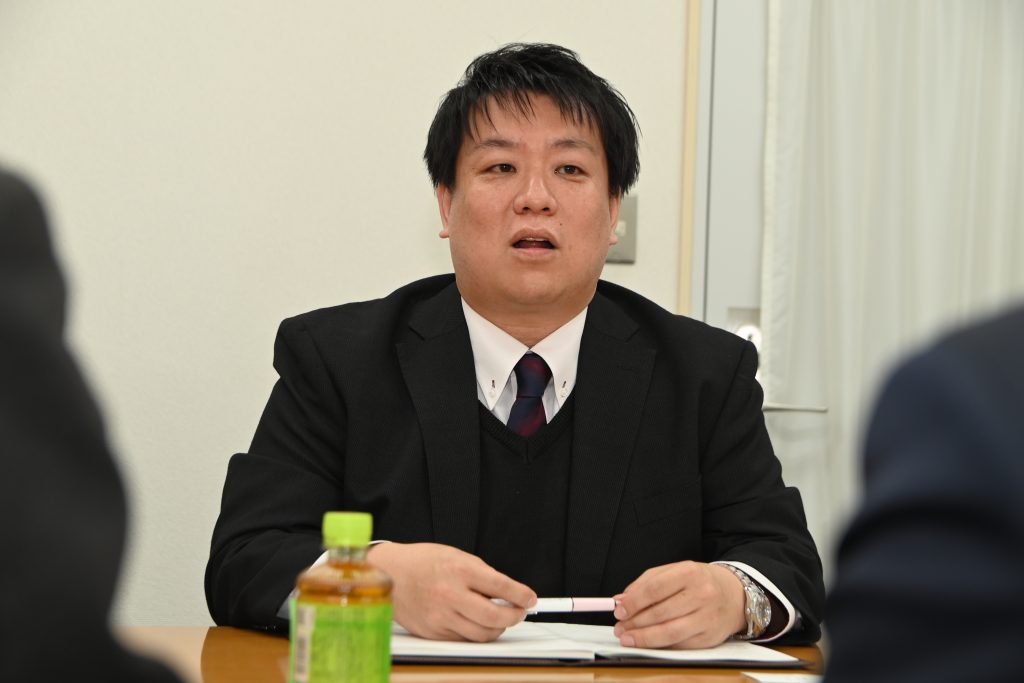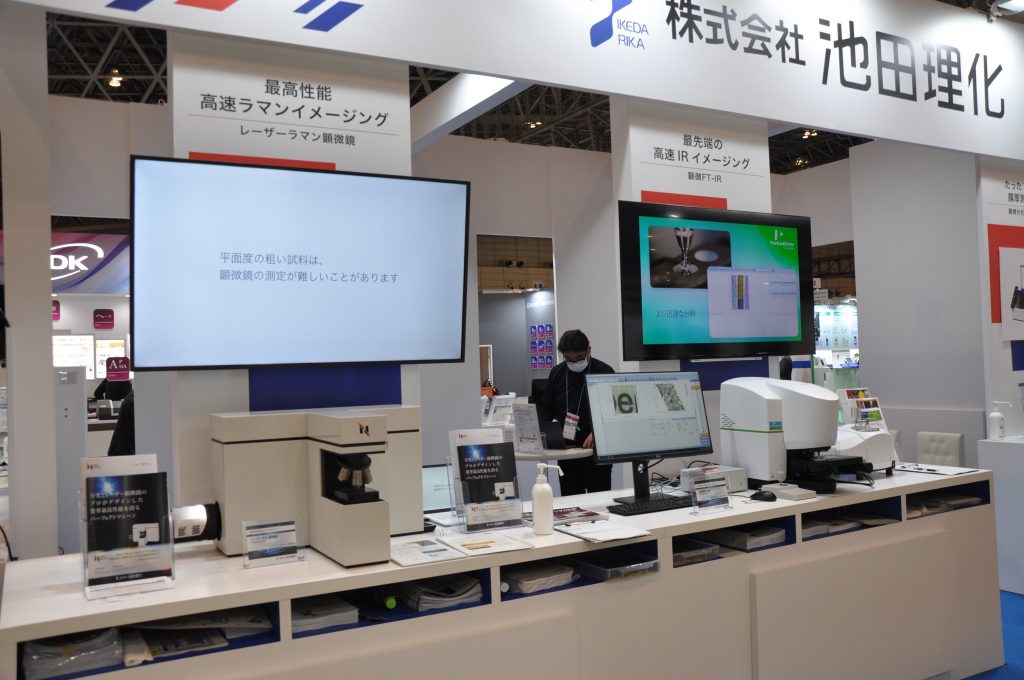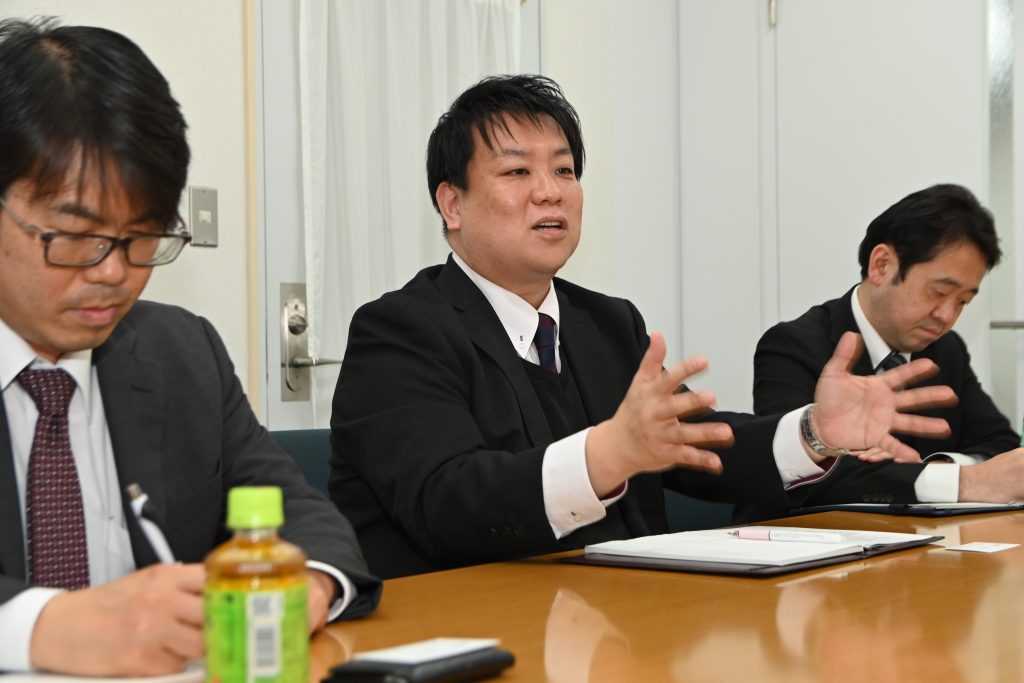Email Magazine
Agency(11/24/2021)
JASIS2021, the most advanced science and analysis systems and solutions exhibition, was held from November 8 to 10 at Makuhari Messe International Exhibition Hall in Chiba Prefecture. Nanophoton did not have a booth this year, but exhibited our products at the booth of our distributor, Ikeda Scientific. The seminar (new technology briefing) was also held in the framework of Ikeda Scientific’s “Must-see! The world of organic material analysis with Nanophoton’s “easy-to-use” Raman microscope” and “The advantage of Raman microscope by Nanophoton’s Raman microscope”.
Ikeda Scientific is a well-established company, celebrating 90 years in business this year. How do they view nanophotons and nanophoton products? We visited Ikeda Scientific’s head office in Tokyo and interviewed Mr. Naoki Mimori, Manager of the Technology Promotion Group, Strategic Sales Department. (E-mail Newsletter editor-in-chief / freelance writer Takeshi Nemoto)

—Could you introduce yourself and tell us what kind of company Ikeda Scientific is?
This year marks the 90th anniversary of our founding as a physical and chemical trading company. Although we now handle the largest volume of products in the bioscience field, we originally started out as a glassware store selling beakers and other products. In recent years, we have been handling a wide range of products from consumables to large equipment for a wide range of research fields. We sell everything except land and people.
The Technology Promotion Group, to which I belong, is promoting the “Industrial Project”. This project started seven and a half years ago with the intention of our representative director to expand our activities to the entire R&D field. The objective is to create a market by selling analytical instruments, management systems, and large products. In addition to bioscience, we are working to form another pillar of our business.

—So you started out as a glassware store and expanded your business.
I heard that it was the first company in Japan to sell PCR systems, and the company grew significantly in the 1990s as it shifted its focus to the bioscience market.
—Have you been working with nanophotons for a long time?
We first met and talked in 2014, when our industrial project had just started seven and a half years ago.
At that time, we were dealing with a variety of analytical instruments in the bioscience field, but there were no manufacturers with whom we had a relationship in the industrial field of the chemical industry. Thinking about how to enter an unknown field, we decided to look for products with special characteristics. That’s how I came to know about Nanophoton’s products. The more I looked into it, the more I became interested in its high spatial resolution and speed of measurement, even among the same Raman microscope products. That’s when we made our first move.
—So that’s how it happened. Did you then proceed to talk about the agency?
At first it was on a consultation basis, but since 2016 we have been placing our products at JASIS and our relationship has grown deeper.

—Could you tell us more about how you see nanophotons?
From my point of view, I have a strong impression that the company has absolute confidence in its technology. I really appreciate their unwavering attitude. The company has incorporated points of differentiation, such as high spatial resolution and high measurement speed, that make customers think, “Wow”. These points are very attractive. I can feel that other companies in the industry are wary of us.
There are some customers who do not know about Nanophoton’s products, but we often come across situations where they are very interested in our products when we propose them to them. It’s a reaction to the fact that they didn’t know. When they realize, “I didn’t know about this product, but it’s amazing,” their attention turns to it.
—I see. Compared to a manufacturer you know who makes a good product, a company you don’t know at all who makes an amazing product will make you a fan because of the gap between the two.
Yes. It’s the image of the professional golfer, Hinako Shibuno. She comes out of nowhere and people say, “Wow, she’s amazing”. That’s how I feel.
—How do you see the market for Raman microscopy?
Most of the analytical instruments other than Raman microscopes have been in use for a long time, so it is said that the demand for replacement is much higher than for new introduction. On the other hand, Raman microscopes will be newly introduced and their performance will be improved. I believe that the market will expand further, and I am looking forward to it.
In my opinion, if it had not been for the COVID-19, our business would have grown more steadily. We were not able to come to work, which stopped us from considering products, and the introduction of Raman microscopes became sluggish in industries hit by the COVID-19.
—How do you see the future of the Raman microscope market?
As for me, I see a high possibility of further expansion if there is a good mix of relevance and uniqueness with other products. I believe that Nanophoton is the best in this respect, and I want to focus my efforts on it.

—Could you tell us more about the industrial project?
The chemical industry is my main target. I believe that chemical materials are the starting point of everything, as they are used as materials for various things, including pharmaceuticals. If the chemical industry does not grow, it will not return to the prosperity of our lives. For this reason, as a physical and chemical trading company, we are trying to strengthen the chemical industry.
We have been dealing with products in the life science field for a long time, and we have many products. We are now trying to get them used in the chemical industry as well. There are many companies and laboratories that have both life science and chemical products.
—What is the position of the Raman microscope in your industrial project?
The Raman microscope is positioned as a product that can be used with high probability in any technical department such as research and development, analysis, and quality control. We mainly focus on users in the chemical materials field, but Japan’s greatest strength is in functional materials, that is, materials that add value to existing materials.
For example, by applying a thin film to a plastic plate, you can see things differently, prevent scratching, gain heat resistance, and many other functions. Researchers want to see this thin stuff. In fact, we have heard from our customers that they are paying attention to Raman microscope because it is difficult to find a device that can see. Raman microscope has become an effective way to solve the problems of our customers.
—What kind of expectations do you have for Nanophoton in the future?
We are willing to help Nanophoton to become the leading company in the Raman world. Nanophoton will continue to pursue better products with Nanophoton, and we hope to collaborate with them for a long time.